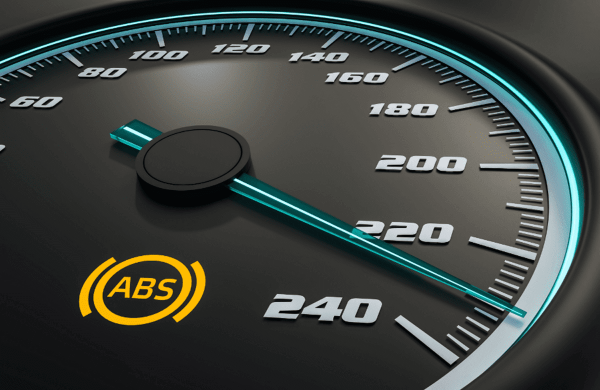The modern automobile stands as a testament to advanced engineering prowess, a complex amalgamation of various electrical and mechanical subsystems intricately woven together to deliver not just efficiency, but paramount safety during operation. Amongst these critical systems is the Anti-lock Braking System (ABS), a key safety feature whose operational status is indicated by a distinct light on the dashboard. This detailed treatise aims to demystify the nuances of your car’s ABS light, providing a comprehensive insight into its significant role.
Deep Dive into the Functionality of Your Car’s ABS Light
Perched on the dashboard of your vehicle, the ABS light is a vital indicator, a vigilant guardian monitoring the health of the anti-lock braking system. When all systems are go, this light momentarily flickers on at the start of your engine as part of the system’s self-diagnostic routine. This is a routine test to ensure everything is working correctly, and once completed, the light should extinguish, indicating the ABS system is in optimal working order.
However, if the ABS light remains lit or starts flashing after the initial start-up, or activates during your journey, it’s sounding an alarm about a potential malfunction or failure within the system. This is a red flag not to be ignored, as it points to a possible compromise in a critical component of your vehicle’s braking system, which could affect your safety.
Interpreting the Messages Conveyed by the ABS Light
Consider the ABS light as a messenger conveying urgent information. If this light stays on beyond the engine’s start-up phase, or unexpectedly illuminates while driving, it’s a clear signal of a disruption in the anti-lock braking system. In certain scenarios, the light’s persistent glow could also be indicating a reduction in the brake fluid level, a crucial aspect of your vehicle’s braking capability.
In some models, a flashing ABS light might imply that while the ABS is experiencing issues, the primary braking system is still operational. This interpretation, however, varies from model to model, emphasizing the importance of referring to your vehicle’s specific manual for accurate and model-specific interpretations.
Exploring the Complex Mechanics of the ABS System
The ABS is an ingeniously designed system, engineered to prevent your car’s wheels from locking during high-pressure braking situations, thereby enabling you to retain control over the vehicle’s direction. It utilizes advanced speed sensors that meticulously monitor the rotational speed of each wheel. When these sensors detect a significant reduction in wheel speed – an indication that the wheels are close to locking up – the system dynamically adjusts the brake pressure to those wheels.
This intelligent control of brake pressure is crucial in preventing wheel lock-up, thereby reducing the risk of skidding, and ensuring that the driver maintains control over the vehicle’s trajectory during sudden braking instances. The ABS light serves as an integral component of this system, providing real-time feedback to the driver on the operational status of this critical safety feature.
Advanced Diagnostic Strategies for Addressing the Illumination of the ABS Indicator
When faced with the challenge of resolving issues indicated by the ABS light, adopting a comprehensive and nuanced approach is crucial. Begin with a thorough examination of the vehicle’s brake fluid levels. A deficiency in this vital fluid is a common culprit for triggering the ABS warning, and restoring it to the appropriate level might effectively alleviate the issue. Next, proceed with a scrupulous inspection of the wheel sensors, vigilantly searching for any signs of physical damage or wear. Should these initial steps fail to yield a resolution, the situation may call for the deployment of an advanced diagnostic tool: the OBD-II scanner.
This intricate device establishes a connection with your vehicle’s onboard diagnostic system, providing a gateway to the inner workings of the ABS module. It meticulously scans and retrieves any error codes that have been recorded, offering a precise diagnosis. These codes are instrumental in unearthing a wide array of potential issues, from compromised wheel sensors to more intricate problems within the hydraulic pump or valve systems.
Comprehensive Overview of Predominant Factors Triggering ABS Light Activation
The prevalence of ABS light activation can frequently be traced back to malfunctions within the wheel speed sensors. These critical components are exceptionally vulnerable to the harsh conditions they encounter, including exposure to dirt, moisture, and the relentless vibrations associated with driving. Moreover, the wires connected to these sensors are susceptible to damage, including corrosion, which can severely impair their ability to transmit signals accurately.
Beyond the sensors, the ABS module itself can be a source of concern. This includes potential failures in its motor, hydraulic pump, or control circuits. Additionally, electrical irregularities, such as unstable or low voltage issues originating from the vehicle’s battery or alternator, are also known to cause the ABS light to activate.
The Serious Consequences of Ignoring the ABS Indicator Light
Disregarding the illumination of the ABS light can lead to dire consequences, especially during critical braking scenarios. The lack of a functional ABS system increases the risk of the wheels locking up under heavy braking, thereby escalating the potential for the vehicle to skid uncontrollably, heightening the risk of accidents.
It’s important to note that while the malfunctioning ABS does not hinder normal driving or regular braking, it does compromise the efficacy of the vehicle’s safety systems. This is particularly concerning in adverse driving conditions, such as on wet, icy, or uneven roads. Thus, neglecting an illuminated ABS light is a significant risk, not just to the driver’s safety but also to that of other road users, underlining the importance of addressing such warnings promptly and effectively.
Advanced Approaches to Resolving ABS Light Alerts and Ensuring Optimal System Health
When the ABS (Anti-lock Braking System) warning light illuminates, signaling potential issues within this critical safety mechanism, it’s essential to escalate the situation to automotive experts. These specialists, with their deep knowledge and access to cutting-edge diagnostic technologies, are adept at uncovering and remedying a variety of ABS-related problems.
The range of potential repairs can be broad, extending from the replacement of a defective sensor to intricate corrections in the electrical wiring network, or even the complete overhaul of the ABS module in more critical situations. Timely and efficient handling of these repairs is not just a matter of vehicle upkeep, but a crucial aspect of ensuring road safety.
Innovative Preventative Strategies for Maintaining ABS System Integrity
Adopting a preventative approach towards vehicle maintenance can play a significant role in forestalling the onset of complex and costly ABS system issues. Key to this is the regular inspection and meticulous cleaning of the ABS sensors, thus warding off the adverse effects of dirt and moisture accumulation. This practice significantly boosts the longevity and efficacy of these sensors.
Furthermore, vigilance in monitoring and maintaining the optimal level of brake fluid, in accordance with the vehicle’s maintenance schedule, is essential. Complementing this, adherence to the vehicle manufacturer’s recommended servicing timelines can facilitate early identification and rectification of any latent faults, thereby preempting more severe malfunctions.
To encapsulate, the ABS light is more than just an indicator; it’s a guardian of your vehicle’s braking efficacy, particularly under emergency conditions. An in-depth comprehension of its functionalities, combined with the skills to address common issues, is indispensable for any car owner. Regular, conscientious maintenance, paired with immediate professional intervention when anomalies are detected, not only prolongs the lifespan of the ABS system but also significantly enhances the safety quotient of your vehicle, ensuring a secure and dependable driving experience.



